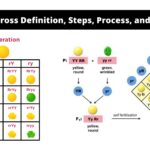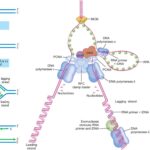IGCSE Biology 70 Views 1 Answers
Sourav PanLv 9November 14, 2024
Explain the role of the ribs, the internal and external intercostal muscles and the diaphragm in producing volume and pressure changes in the thorax leading to the ventilation of the lungs
Explain the role of the ribs, the internal and external intercostal muscles and the diaphragm in producing volume and pressure changes in the thorax leading to the ventilation of the lungs
Please login to save the post
Please login to submit an answer.
Sourav PanLv 9May 15, 2025
The process of ventilation, or breathing, involves a coordinated effort between the ribs, internal and external intercostal muscles, and the diaphragm. Each component plays a crucial role in changing the volume and pressure within the thoracic cavity, facilitating air movement into and out of the lungs. Here’s a detailed explanation of their roles:
1. Diaphragm
- Role: The diaphragm is a dome-shaped muscle that separates the thoracic cavity from the abdominal cavity.
- Inhalation: When the diaphragm contracts, it flattens and moves downward. This action increases the vertical dimension of the thoracic cavity, leading to an increase in thoracic volume.
- Pressure Change: According to Boyle’s Law, as the volume of the thoracic cavity increases, the pressure within it decreases (creating subatmospheric pressure). This pressure drop allows air to flow into the lungs from the atmosphere.
2. External Intercostal Muscles
- Role: These muscles are located between the ribs and run diagonally downward and forward.
- Inhalation: During inhalation, the external intercostal muscles contract, pulling the ribs upward and outward. This action further expands the thoracic cavity in both lateral and anteroposterior dimensions.
- Pressure Change: The expansion of the thoracic cavity caused by these muscles contributes to a decrease in intrapulmonary pressure, facilitating airflow into the lungs.
3. Internal Intercostal Muscles
- Role: Located deeper than the external intercostals, these muscles run perpendicular to them.
- Exhalation: During forced exhalation (such as during vigorous exercise), the internal intercostal muscles contract to pull the ribs downward and inward. This action decreases the volume of the thoracic cavity more rapidly.
- Pressure Change: By reducing thoracic volume, they increase intrapulmonary pressure above atmospheric pressure, pushing air out of the lungs.
4. Ribs
- Role: The rib cage provides structural support and protection for the lungs and heart while also playing a significant role in breathing mechanics.
- Movement: The movement of ribs during inhalation (elevation) and exhalation (depression) is facilitated by both sets of intercostal muscles. The ribs expand outward during inhalation and return to their resting position during exhalation.
- Pressure Change: The movement of ribs contributes to changes in thoracic volume that affect lung pressures, facilitating airflow.
Summary of Mechanism
- Inhalation:
- Diaphragm contracts → Flattens → Increases thoracic volume.
- External intercostal muscles contract → Ribs elevate → Further increases thoracic volume.
- Resulting decrease in intrapulmonary pressure allows air to flow into lungs.
- Exhalation:
- Diaphragm relaxes → Moves upward → Decreases thoracic volume.
- Internal intercostal muscles contract (if needed) → Ribs depress → Further decreases thoracic volume.
- Resulting increase in intrapulmonary pressure forces air out of lungs.
0
0 likes
- Share on Facebook
- Share on Twitter
- Share on LinkedIn
0 found this helpful out of 0 votes
Helpful: 0%
Helpful: 0%
Was this page helpful?




